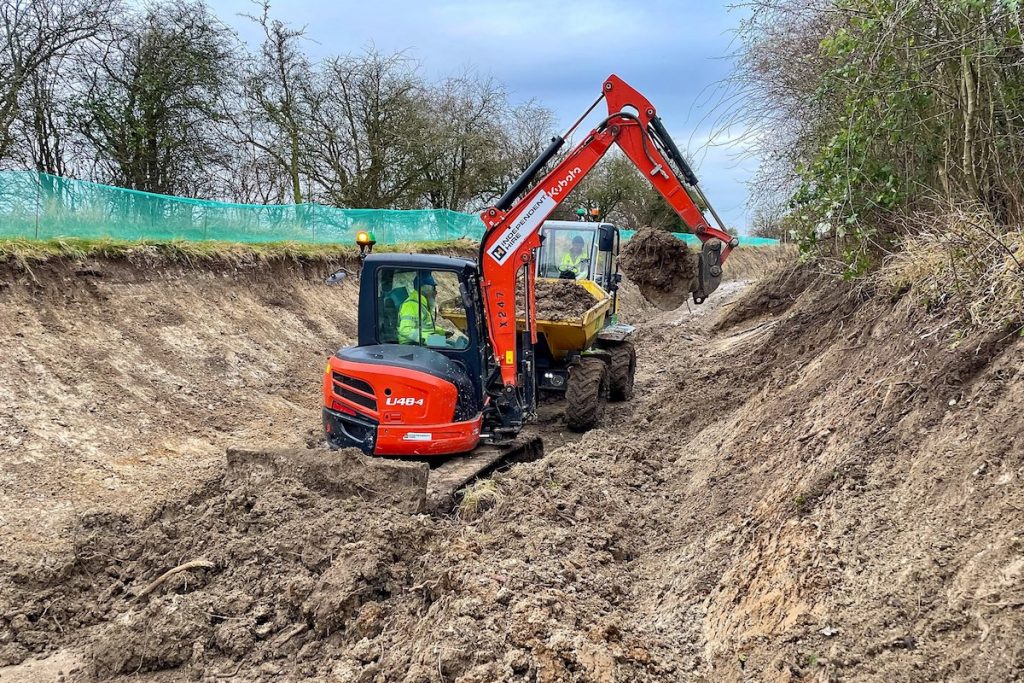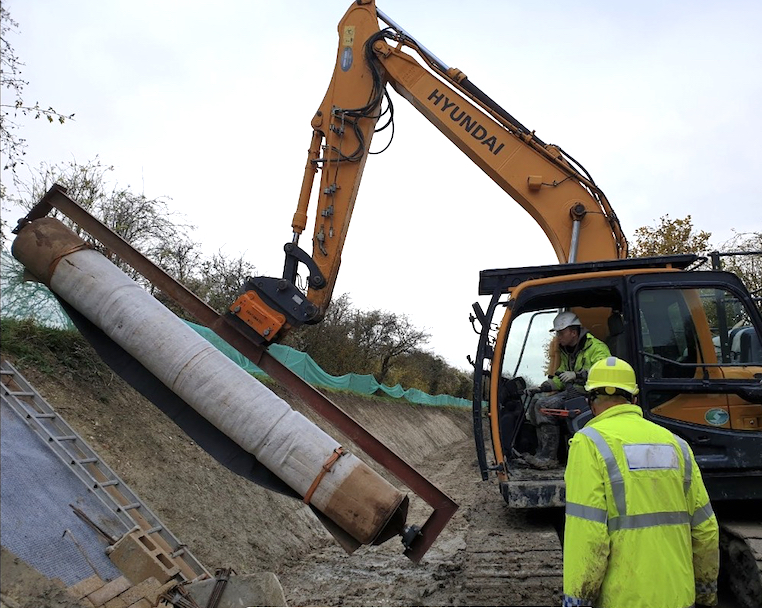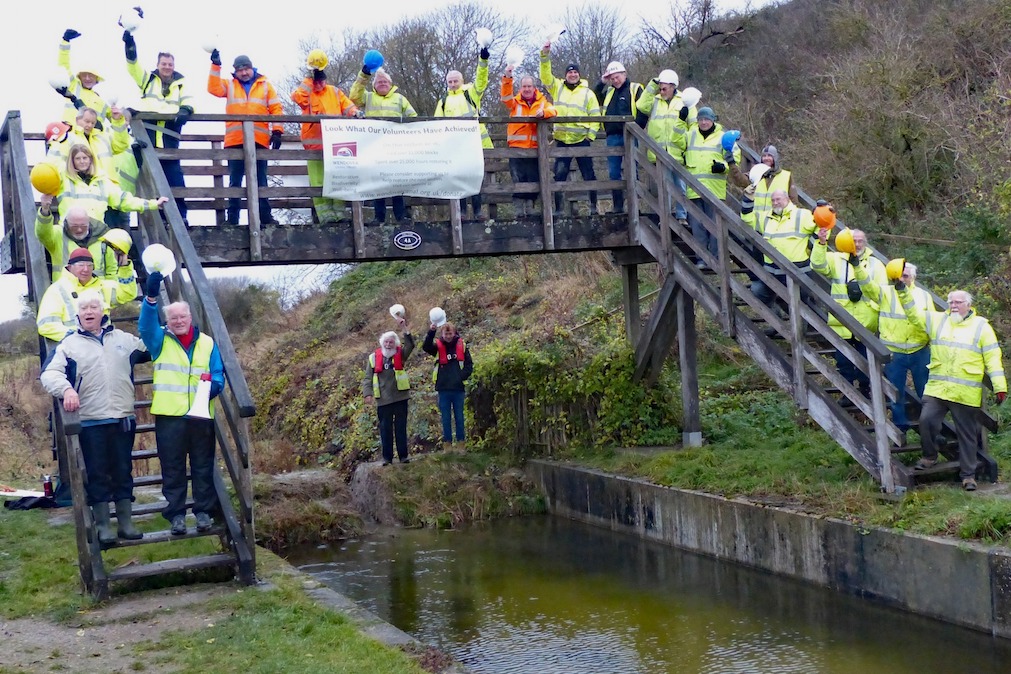
Volunteers hard at work restoring a long forgotten canal have delivered over a million pounds worth of work for free.
Up to 100 people working at different times and in a variety of roles are slowly rebuilding a 1km section of the Wendover Canal near the village of Little Tring which was last used over a century ago.
Their aim is to reconnect the 10km long waterway from Wendover in Buckinghamshire to the Grand Union Canal near Bulbourne in Hertfordshire.

Until recently the section being worked on would have been difficult to recognise: the canal had been partially filled with vegetation and soil blown in from neighbouring fields.
Volunteers worked to dig out the loose material using construction plant, before starting to reprofile the sides of the canal and building blockwork up its sides.
Sections of clay impregnated liner, each up to 40m in length, are currently being installed using a special machine to make the canal watertight.
Over the summer, volunteers removed 1400t of old domestic rubbish in five days that had been dumped in part of the canal during the 1920s.
This autumn a new section of canal infrastructure known as a ‘narrows’ will be completed to ensure wider boats do not attempt to navigate a relined section where they would be unable to pass smaller boats.
Further along the waterway three bridges will need to be raised and dredging carried out before the Wendover Canal can be opened to boats, which could be in around three to five years.
“We are extremely grateful for and totally dependent on our volunteers, having never had any paid employees,” Wendover Canal Trust chairman Clive Johnson told Transport Infrastructure News.
“Our volunteers have delivered well over £1 million pounds of work, on top of the £1 million plus we have already raised and spent.”
Clive added that the restoration project aims to improve people’s wellbeing, increase biodiversity and preserve local heritage. “We continue to attract more people to enjoy our ever improving green corridor, through walking and cycling as well as boating,” he said.

Published on Transport Infrastructure News, 16 September 2022